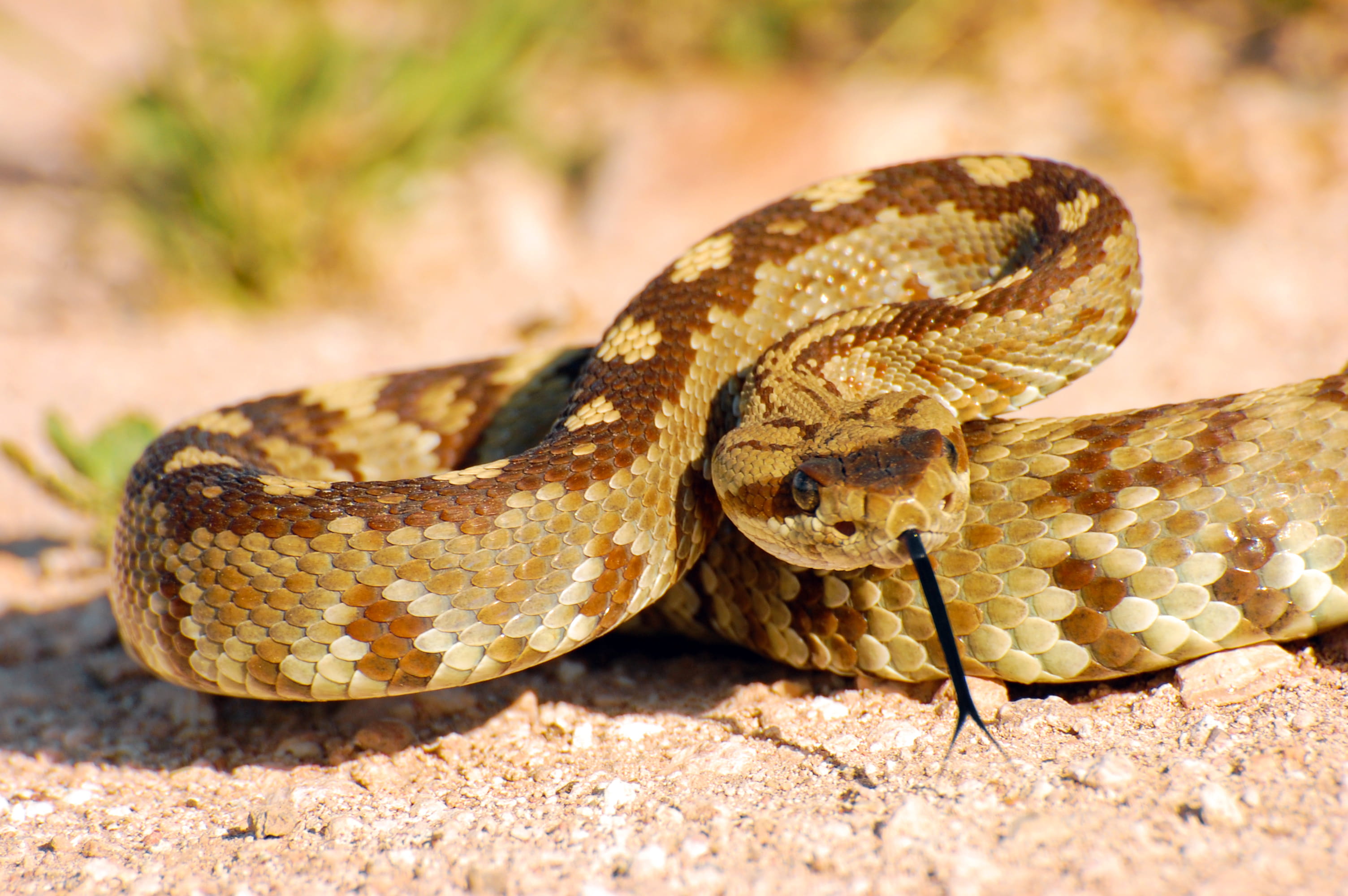Rattlesnake Bite Prevention
January 01, 2017
Be Rattlesnake Aware
You are most likely to encounter a rattlesnake when walking, hiking, climbing, or camping. You're likely to find rattlesnakes around rocks, shrubs, tall grasses, and brush. They like hot surfaces and you'll often see them sunning themselves on rocks, pavement, or trails.
Be Rattlesnake Safe
- Dress appropriately. Most bites happen to the hands, feet and ankles.
- Wear good quality hiking boots, tennis shoes, and thick socks. Ankle boots are best. Avoid sandals, open-toed shoes, or walking barefoot.
- Wear long, loose-fitting pants.
- Avoid sticking your hands or feet into holes, thick grasses, and other places where you can’t see snakes that may be hiding.
- Use a flashlight. Flashlights can help you spot a snake on or near the trail at dusk when snakes tend to be active.
- Always hike with a friend.
- Communicate. Carry a cell phone and make sure family and friends know where you are hiking and how long you plan to be gone.
- Stay out of the way. Stay on well-used trails and avoid wandering into tall grass, underbrush and weeds.
Be Rattlesnake Cautious
- Look before you sit. Look before you leap. Watch where you sit and place your feet.
- Carry a walking stick. Use the stick to whack bushes and grasses before walk on or near them.
- Be careful around water. Rattlesnakes can swim. Anything resembling a long stick in the water might be a rattlesnake.
- Move out of the way. If you come across a rattlesnake, calmly and quietly back up so you are out of the snake’s range (at least 5 feet). A rattlesnake's strike distance can be up to one third to one half of its overall length, but don't get close enough to measure the snake's length.
- Leave the snake alone. Avoid provoking a rattlesnake. Avoid poking it, kicking it, throwing rocks, or trying to annoy the snake. A threatened or scared snake is more likely to strike back releasing extra venom.
- Pay attention when camping. Check your campsite before setting up. Arrive in daylight and set up in daylight. Always check your tent and sleeping bags before climbing in. Close tent flaps when coming and going.
- Be careful when collecting firewood. Piles of wood are an ideal rattlesnake hiding place.
- Watch your children. Teach your children safe behaviors, how to avoid a rattlesnake encounter and what to do if they find a snake.
- Let an adult lead. When hiking with children, an adult should always lead and a second adult should bring up the rear.
- Avoid letting your dog run freely. Dogs can die if bitten by a rattlesnake. Not surprisingly, dogs are usually bitten on the snout or head.
- Avoid trying to kill or pick up a rattlesnake. A snake may be sleeping. Even dead snakes can "bite" because of a reflex action that closes the mouth injecting venom.
What to Do If Bitten by a Rattlesnake
- Remain calm.
- Seek immediate medical attention by dialing 911 or calling your local poison center - 1-800-222-1222.
- Keep the bitten arm, leg, or body part at or slightly below heart level.
- Note the time the bite happened. Avoid trying to capture or kill the snake, but try to remember its color and shape so you can describe it. This can help with medical treatment. If you can do so safely and without delay, take a photo.
- Remove all tight clothing or jewelry.
- Do not cut the bite or try to suck the venom out.
- Leave the bite site alone. Do not use any first aid measures such as applying heat, cold, electricity or any substance to the bite.
- Avoid allowing the victim to drink caffeine or alcohol or take any drugs.
- Transport the victim to a hospital as quickly as possible, but use care and do not convert the snake bite emergency into a traffic accident. It's best to go by ambulance.
Symptoms
- Intense pain spreading out from the bite
- A scratch or puncture(s) from fangs. Sometimes bites only show one fang mark.
- Progressive swelling and bruising where bitten
- Sweating
- Weakness
- Nausea and vomiting
- Muscle twitching
- Metallic taste in mouth
- Light-headedness or loss of consciousness
What Do Rattlesnakes Look Like?
- Flat, triangular shaped heads
- Openings between the nostrils and eyes
- Hooded and elliptical pupils
- Coloration — generally tan and brown patchwork
- The rattle at the end of the rattlesnake's tail is made of modified scales. Rattles may also be broken off, malformed or silent. Do not rely on the presence or absence of the rattler as the only form of identification.
- Young rattlesnakes often have only a few parts of the rattler formed — young rattlesnakes are still venomous.
- ALL rattlesnakes are venomous
Manage Your Healthcare From Anywhere, At Any Time
Create a New Account
Existing MyChart Account



